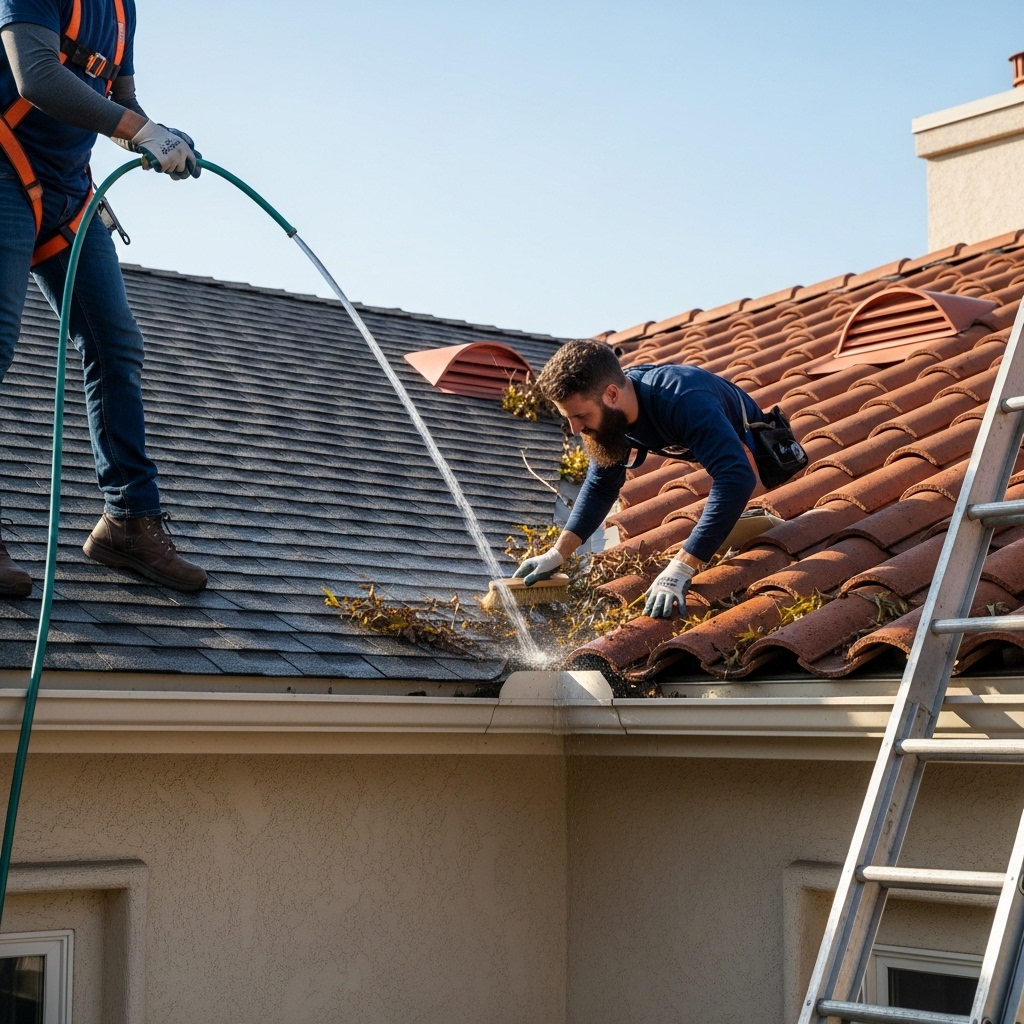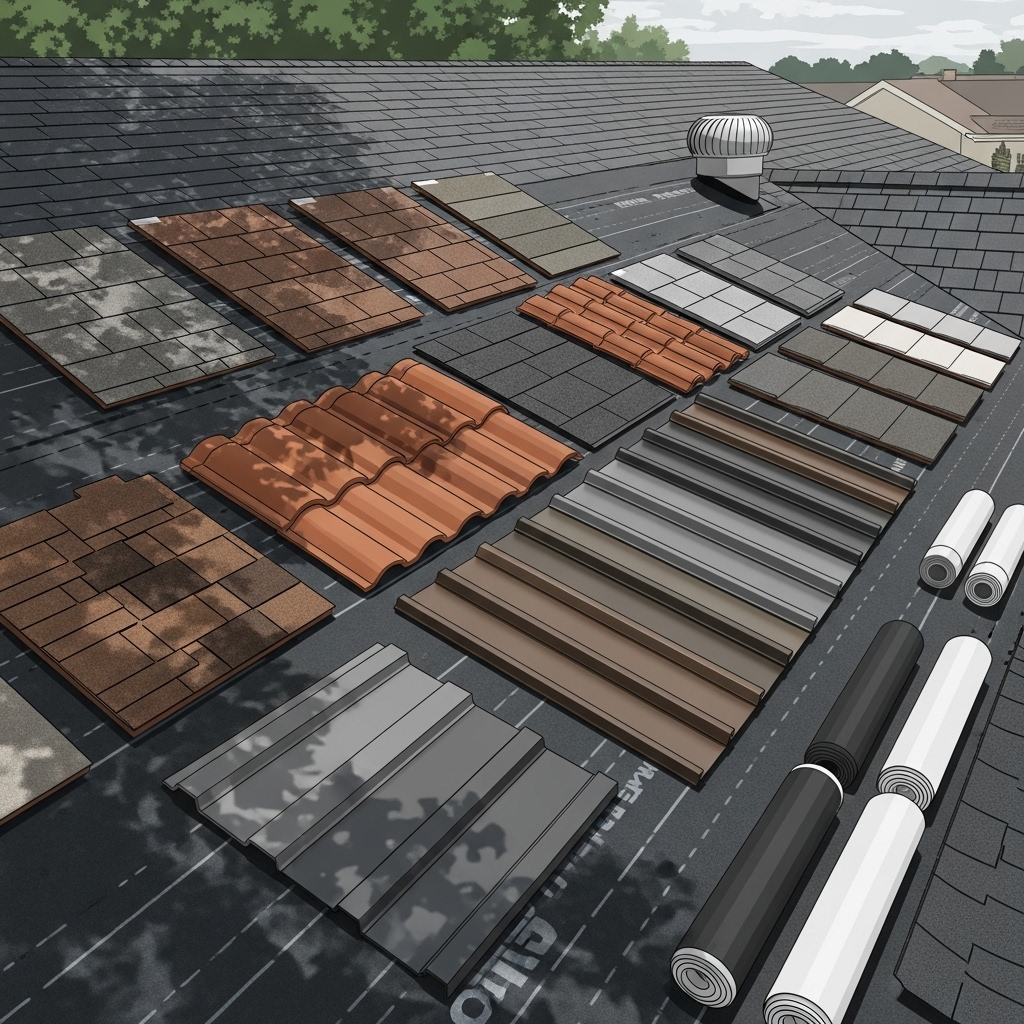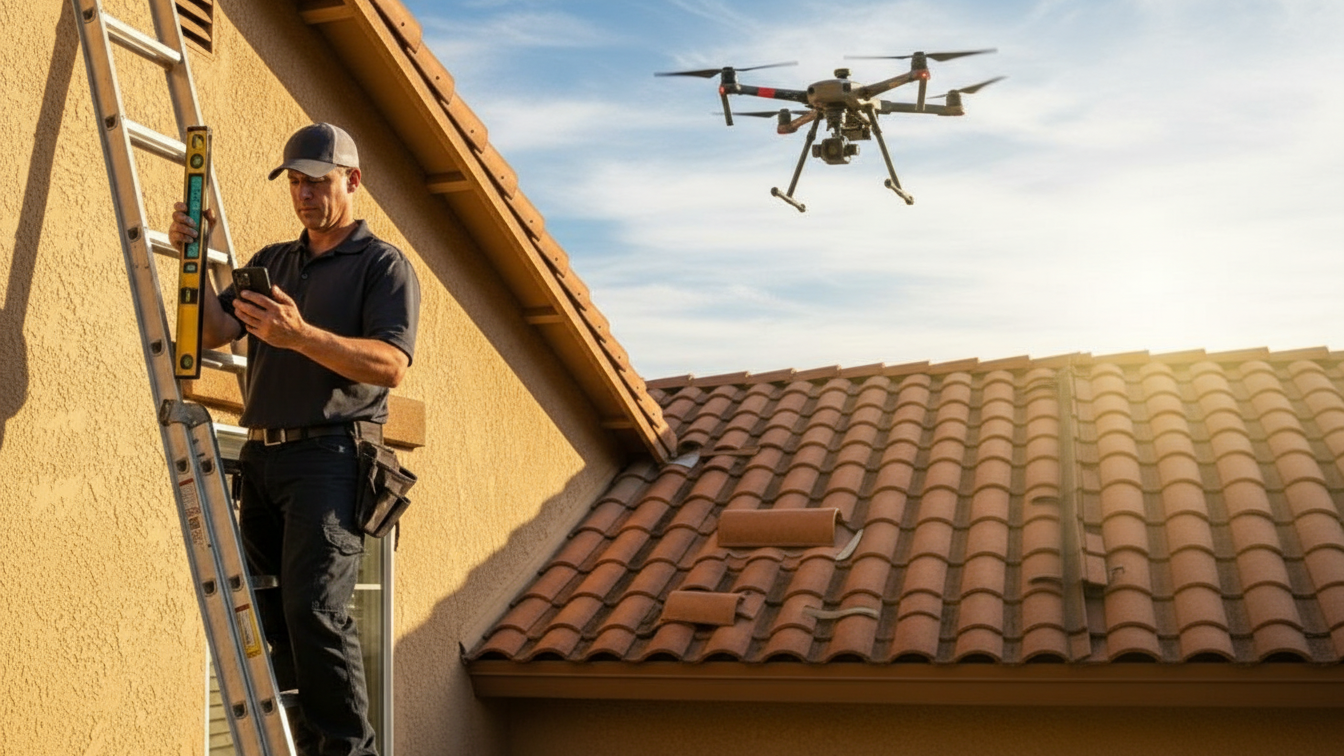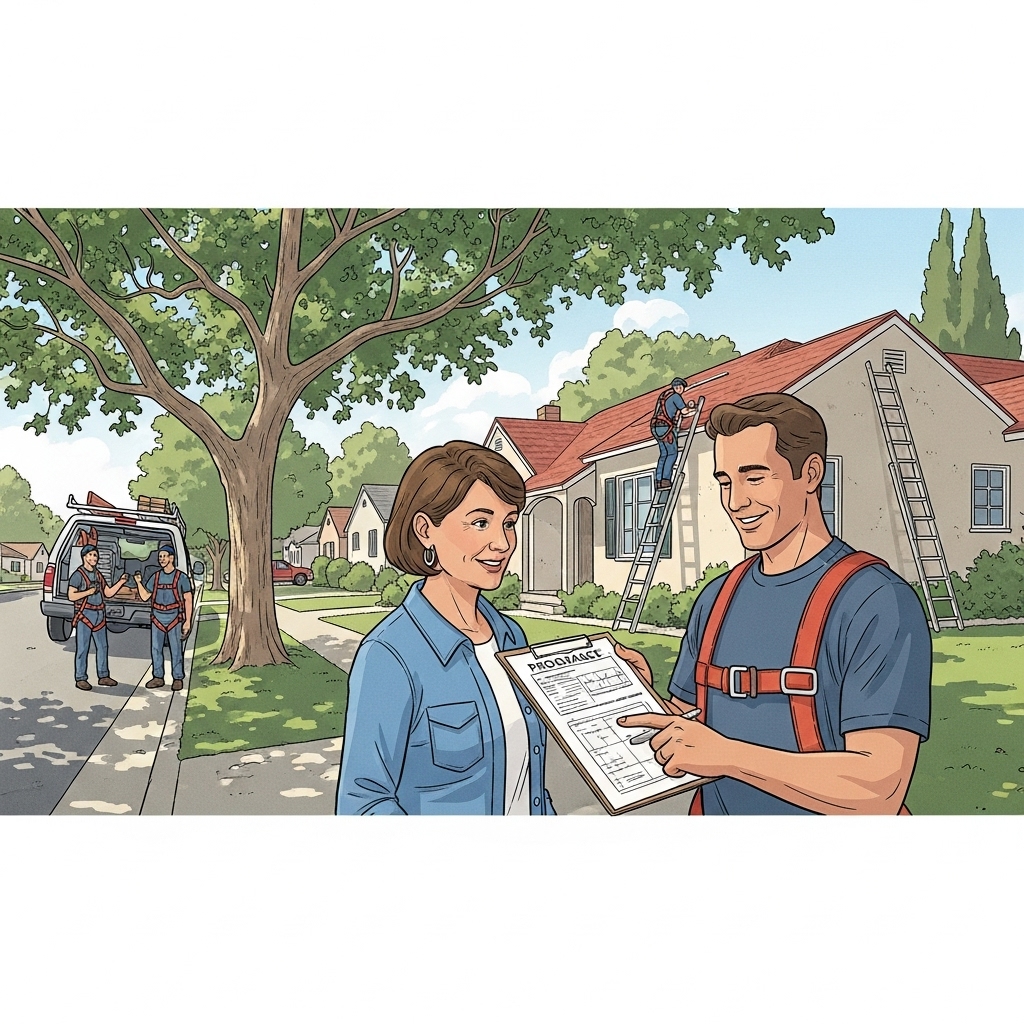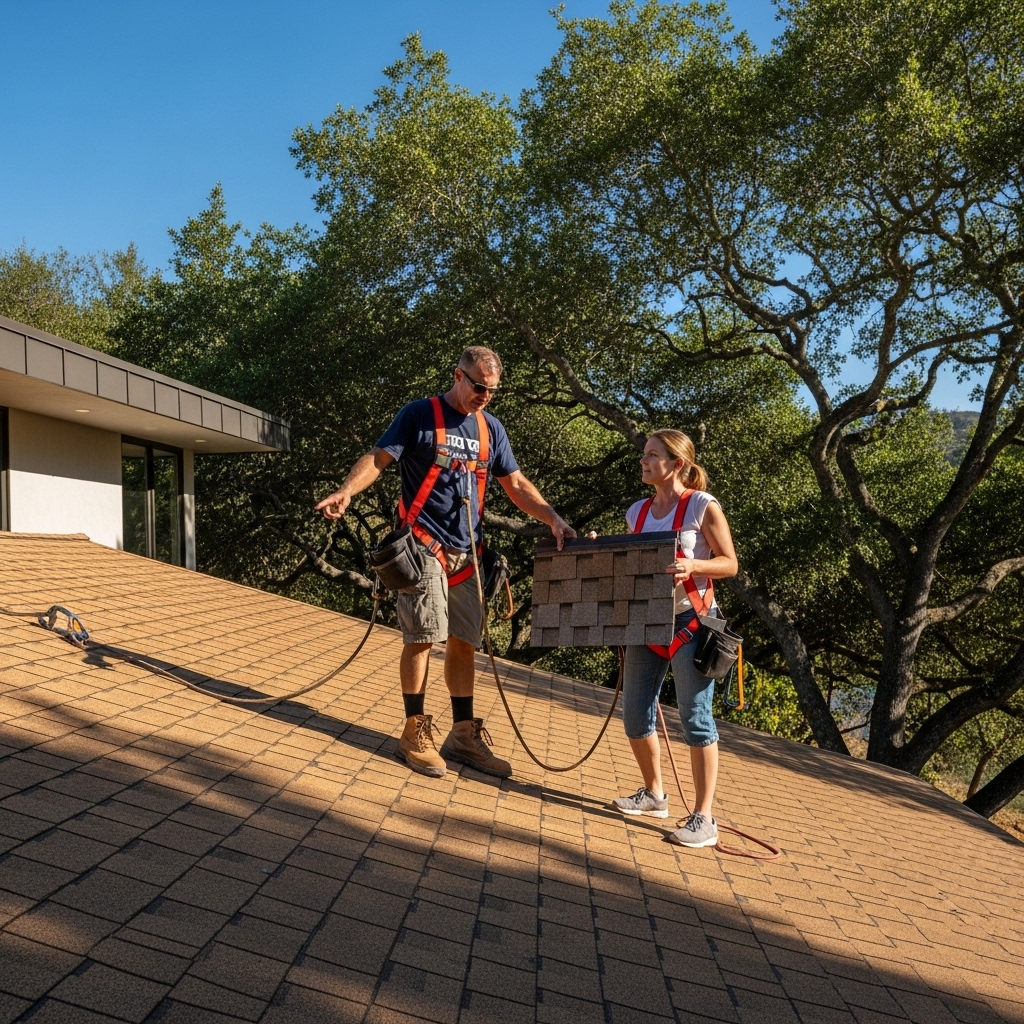Maintenance as the Engine of Sustainability
In Tarzana, where sun, wind, and the occasional downpour all take turns testing your home, maintenance is the quiet engine that keeps a green roof truly green. The materials you chose—cool shingles, tile, metal, or a reflective membrane—set the stage, but routine care ensures they perform as designed. A few measured, seasonal habits can preserve reflectivity, protect flashing details, and keep ventilation moving hot attic air out before it sneaks into living spaces. This is the kind of attention that transforms a good roofing system into a long-lasting, eco-friendly one, and it’s not about fuss; it’s about knowing when and where to look.
Think of maintenance as part of the roof’s life cycle rather than an afterthought. When we plan a reroof in Tarzana, we map out access paths, safe hose bibs for gentle rinsing, and notes about nearby trees so that cleaning is efficient and protective. If you’re just starting to evaluate your roof’s needs, consider browsing green eco-friendly roofing resources to understand how upkeep supports performance in our local climate.
Seasonal Rhythm: After Winds, Before Rains
The Santa Ana season sets the tempo for roof checks. After wind events, it’s wise to walk the property and scan for debris accumulations in valleys, against dormers, and along parapet walls. Leaves, seed pods, and small branches pack into corners where they can trap moisture and encourage algae or mold. Clearing these areas keeps water paths open so the first rains of the season wash cleanly off the roof instead of backing up under shingles or tiles. On metal and single-ply roofs, those same piles can stain finishes and degrade reflective performance if left in place.
Before the winter rains arrive, a more thorough inspection makes sense. Look at flashings around skylights and chimneys, examine ridge caps and hip lines for movement, and verify that any coatings or sealants remain sound. This isn’t just about avoiding leaks; it’s about preserving the thermal and reflective characteristics that make your roof eco-friendly. A leak-free, tightly detailed roof maintains insulation performance and protects the attic from moisture that could undermine ventilation effectiveness.
Keeping Reflective Surfaces Clean
Cool roofs and reflective membranes do their best work when they are clean. In Tarzana’s dry months, dust and pollen settle and can slightly dull reflectivity. A gentle, low-pressure rinse with clean water restores performance without risking damage. Avoid harsh chemicals or abrasive brushes; they can compromise protective coatings or roughen surfaces, inviting dirt to stick more readily. On single-ply membranes, a soft-bristle brush and mild, manufacturer-approved cleaner address stubborn bird droppings or sap without stripping the surface.
Schedule cleaning for cooler morning hours so water doesn’t evaporate instantly and leave residues. Use safe access paths—walk pads on flat roofs, harness anchor points where required—and always protect nearby landscaping from runoff. Done thoughtfully, a quick wash-down two or three times a year keeps reflectivity high, which you’ll notice most during late afternoon heat spikes.
Tile Roof Care: Valleys, Bird Stops, and Broken Pieces
Tile’s thermal mass and natural fire resistance are big sustainability wins, but tiles demand targeted attention. Valleys are the workhorses of a tile roof; keep them free of debris so water flows swiftly. Bird stops at eaves and closed ridges keep embers and pests out, but they can also catch leaves—another reason for seasonal cleaning. If you notice a broken tile, replace it promptly. Small fractures allow water to reach underlayment and, over time, can shorten its life. With careful replacements and occasional fastener checks, tile roofs reward you with long service and steady comfort in Tarzana’s shifting seasons.
When you walk a tile roof—ideally only if trained and equipped—step on the lower third of the tile where it bears on the batten to avoid cracking. Better yet, use professional service for inspections, especially on steep slopes. The relatively small investment of time and attention keeps a tile roof’s sustainability story intact.
Metal Roof Tune-Ups: Fasteners, Coatings, and Edges
Metal roofs are durable, but like any precision system, they benefit from tune-ups. Inspect fasteners and clips at eaves and ridges, ensuring thermal movement remains smooth and secure. Look for scuffs or scratches in the finish, particularly near tree branches; touch-up paint approved by the manufacturer preserves corrosion resistance and appearance. Check sealant lines at penetrations and transitions—these are sacrificial elements that may need refreshing over the decades to maintain a tight, efficient system.
Edges deserve special attention in windy Tarzana corridors. Hemmed edges and continuous cleats resist uplift, but debris crowds can still compromise performance if neglected. Keeping edges clean maintains both wind resistance and water-shedding precision, supporting the roof’s long-term eco credentials.
Single-Ply and Modified Bitumen: Drainage and Walk Paths
On low-slope roofs, ponding is the adversary. Even reflective membranes degrade faster when water lingers. After winds, verify that scuppers and drains are clear and that tapered insulation continues to direct water toward exits. Walk pads around HVAC units and at service routes concentrate foot traffic on protected zones, preserving the field membrane. If algae gain a foothold near standing water, gentle cleaning combined with small drainage corrections often solves the problem and revives reflectivity.
Skylight curbs and parapet details are worth a close look. Welded seams and counterflashings should appear uniform, without voids or lifted edges. Early intervention on small flaws prevents water intrusion and preserves the membrane’s reflective, energy-helping performance throughout Tarzana’s long summer.
Ventilation and Attic Health Checks
Green roofing performance hinges on what happens in the attic. Balanced intake at the eaves and exhaust at the ridge keep temperatures in check. Periodically confirm that soffit vents remain unobstructed by paint, insulation, or nesting activity. Inside the attic, look for even insulation coverage, sealed duct penetrations, and signs of moisture such as staining around bath fan ducts. Any irregularities can be corrected before they cascade into comfort issues. In practice, a healthy attic means bedrooms are calmer at dusk, and second floors avoid that stubborn late-day heat soak.
Don’t forget mechanical ventilation pathways. Range hoods and bath fans must terminate outside, not into the attic. Proper termination preserves indoor air quality and protects roof components from humidity. A few minutes of verification during maintenance pays dividends all year.
Wildfire Readiness and Debris Management
Maintenance intersects with resilience when we consider wildfire. Keep gutters and roof surfaces clear of dry leaves, needles, and seed pods. Inspect ember-resistant vents to ensure screens are intact and free of clogging. On tile roofs, confirm that bird stops and closed ridges remain tight. On metal and shingle roofs, check that perimeters are sealed and free of gaps. These habits reduce ignition risks and support community-wide safety without altering your home’s look or feel.
We also review nearby landscaping: overhanging branches that shed onto the roof, vines that creep toward eaves, and mulch that migrates into gutters during wind events. Trim and tidy with an eye toward both fire safety and water management, and your roof will remain a strong, eco-friendly line of defense.
Documenting Condition and Planning Ahead
Taking photos during each maintenance cycle creates a simple, powerful record. You’ll spot patterns—where debris likes to gather, which sealant joints age faster, and how reflective surfaces respond to seasonal dust. This documentation informs future service and helps you schedule targeted tune-ups before minor issues become major ones. Over time, your roof’s maintenance plan becomes as tailored to your Tarzana home as the original installation.
Midway through your efforts, it can be useful to revisit a concise overview of eco-friendly roofing services to ensure your maintenance aligns with the materials and assemblies you actually have. Knowing what’s under the surface—underlayment type, ventilation strategy, insulation—guides smarter care.
FAQs About Green Roof Maintenance in Tarzana
How often should I clean a cool roof surface?
In Tarzana, plan for light rinsing two or three times a year, with a thorough check after major wind events. The goal is to remove dust, pollen, and organic matter that reduce reflectivity. Use gentle methods and avoid harsh chemicals that could damage coatings.
What’s the most important maintenance task for tile roofs?
Keep valleys clear and replace broken tiles promptly. Also ensure bird stops and closed ridges remain intact to maintain both water management and ember resistance. These simple steps preserve the system’s longevity and performance.
Do metal roofs require much maintenance?
Not much, but periodic tune-ups matter. Inspect fasteners, touch up finish scratches, and refresh sealants at penetrations as needed. Keeping edges clean and checking for branch scuffs helps metal roofs serve for decades with minimal intervention.
How do I prevent ponding on my flat roof?
Confirm that drains and scuppers are clear, and ensure tapered insulation continues to slope water toward exits. If ponding persists, a small corrective project can restore drainage. Regular checks after wind events keep issues from escalating.
Can I handle maintenance myself?
Many tasks are homeowner-friendly—ground-level gutter checks, visual inspections, and gentle rinsing. For roof access or steep slopes, hire professionals equipped with proper safety gear. A hybrid approach keeps costs reasonable and protects both you and the roof.
Does maintenance affect attic ventilation performance?
Absolutely. Clearing soffit vents, confirming ridge vent continuity, and ensuring duct terminations go outside all preserve the convective airflow that makes green roofing assemblies work in our climate. Small adjustments here often deliver outsized comfort gains.
When you’re ready to put a maintenance plan to work for your roof, we’re here to help with inspections, gentle cleaning, and targeted tune-ups that respect both your home and our climate. For a partner who understands Tarzana’s rhythm and the materials on your roof, explore our green roofing services and keep your eco-friendly roof performing at its best year after year.

